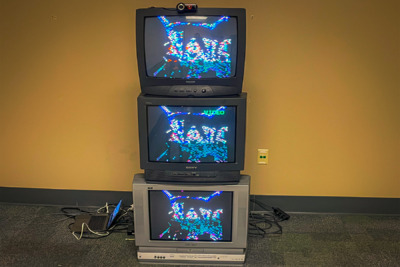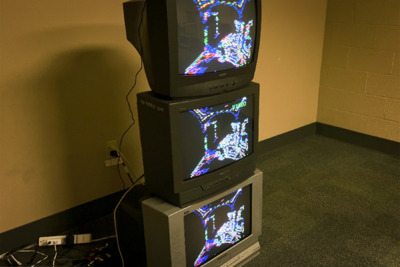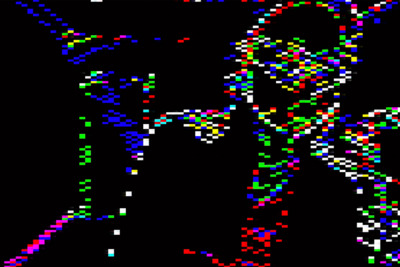Ian O'Neill: Image.RGB
Artist Statement
Humans are now more than ever obsessed with the digital image of self. We utilize algorithms to perfect how we are perceived by a vast network of others, all who use these images to in turn perceive who we are. Social networks like Instagram generate enormous amounts of value from the obsession and influence of these 1s and 0s. “Image.RBG” takes the idea of the digital image and breaks it down to its simplest form, a series of colored bits in the Red, Blue, and Green channels. A webcam processes the image data of the viewer and displays back a video mosaic onto a video sculpture made of CRT TVs. Presenting the video feed on what would be considered “Old Technology” shows us how far we've truly evolved, but the rules of human perception have never changed. The TVs are stacked to be as tall as a person, with the webcam at eye level. Viewers are asked to play within the space and interact with the sculpture to see how they look in these monitors. This wonderment of seeing a distorted picture of self finds the viewer distracting themselves from the connectivity of modern-day life to experience these surreal images of self. No matter how vast our technology becomes, the images we see today are still the same we see in “Image.RBG”, a series of Red Blue and Green bits. The project contains no audio element. Audio is used only for documentation purposes.
About the project
- Title of Work: Image.RGB
- Medium: 3 CRT Video Monitors, 6 ft, 1.75 ft, 2 ft
- Student's Name: Ian O'Neill
- Major: Economics
- Anticipated Graduation Date: May 2021
- Hometown: Columbia, Missouri
- Student's Mentor: Katina Bitsicas
- Mentor's Department: Digital Storytelling
- Art Project ID: 21VADS - 019



Comments
Brynne Davis
So fun and such a different way of using old technology! Would love to see this installed in person!
Sarah Humfeld
Ian, I love your interactive art! I heard you mention that most viewers initially reach their hand out toward the TVs. That response resembles an interesting behavior seen in animals presented with mirrors: scientists make conclusions about self-recognition based on whether the animal reaches toward themselves or toward the animal in the mirror. I think you have hit on something profound about people recognizing themselves in binary pixels. I am curious how children, teenagers, and adults would respond differently to your 'test' of self-awareness? Thanks for sharing your work!
Benton Kidd
This could grab a lot of attention if it were installed somewhere. As a museum curator, I've seen how popular an interactive piece can be. Cool idea :-)
Jim Spain
Wow - Ian. Love how you built this using the old technology. Fascinating.